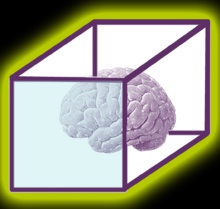
'Recognizing the need is the primary condition for design.'
Milton Glaser
Examination Language
Certain words and phrases are used in the Examination – You must understand what they mean and be able to apply this knowledge when answering Examination questions.
Command Words
Annotate Add brief notes/reasons, to explain ideas, to an illustration – Remember
that you must be critical/analytical in order to access the top range of marks.
Calculate Implies that a numerical answer is needed.
Complete Enter an answer in the space provided.
Describe State in words the important points of the topic.
Dimension Add measurements to a drawing
Draw Use a straight edge, pencil, fine-liner (Set square etc) to help
produce a Drawing e.g. Orthographic.
Explain Write an explanation of a topic / point that includes
justification of the answer i.e. Why / How / Because etc.
Discuss Develop/debate an argument to justify your answer/point of view etc.
Evaluate Assess/appraise once work against a criteria etc.
Free Hand Using a pencil, fine liner and your hand to produce an illustration
or sketch without the use of rulers and drawing instruments etc.
Give a reason How / Why – a reason which applies knowledge of this subject
e.g. Expanded Polystyrene is used for packaging because …..
Sketch Informal ‘freehand’ drawings to illustrate an idea / design or
point, without the use of rulers and drawing instruments.
Label Identify parts of a product / drawing etc. e.g. leader lines, key etc
Drawing Types
Isometric Projection
- 3 Dimensional Drawing / sketching / pictorial drawing.
Single Point Perspective
- Pictorial Drawing / sketching that uses one Vanishing point.
Two Point Perspective
Pictorial Drawing / sketching that uses two Vanishing points.
Third Angle Orthographic Projection / Drawing
2 Dimensional drawing used to produce a Working Drawing –
The most accurate type of drawing used in Technology.
It is used to communicate ideas internationally.
A Working Drawing is used by manufacturers / craftsmen
etc. to work from in order to produce a Product e.g.
A Package, Piece of Furniture etc.
Always stick to Isometric view or orthographic projections.
Examination Tips
Prep Sheet
• You could be issued with a prep sheet before some exams.
• You must research into the Design Theme, if there is one on the prep sheet.
• Look for key words.
• You will need to collect appropriate examples relating to the theme and use
your text books and the internet to revise up until your exam.
Exam Paper
• Look through the paper before you start work. This will allow you to:
a) see where to place your answers on the paper
b) get an idea about the theme of the paper and what you are expected to do
• Answer all of the questions and complete all of the tasks in the order given on
the paper – DO NOT JUMP FROM QUESTION TO QUESTION OR MISS
QUESTIONS OUT.
• Attempt every question – marks can be gained by making an attempt but
blank questions do not score.
• Only do what you are asked to do – if asked for 3 answers then only 3 are
needed to score all of the marks, 2 answers will not score maximum marks
and 4 will gain no extra credit but will cost you time.
Examination Time Guide
Your Examination will last for a set time. You must use this time to score as many
marks as you can:
Each question indicates how long to spend on it.
The time guide works out to be about one mark per minute of work.
If 10 minutes is allowed for a task and you only use 5 minutes, then it is
unlikely that you will have gained full marks.
If you use more time than is recommended then this may not allow you enough time to finish the paper.
You must use all of this time to:
1) complete all of the question
2) to show knowledge and skills e.g. Shading, tonal control, line enhancement,
material effects etc.
3) Use guide lines for uniformity of lettering when designing.
4) To construct drawings e.g. Isometric Crates.
5) To think about the question before you answer.
6) To plan your responses e.g. Written answers.
7) To plan extended writing – Write it out on the back of the sheet first if you
want to but remember to cross it out.
8) Quality of written communication may be tested.
9) Check your answers when you have finished.
REMEMBER:
Cross out any unwanted answers or they will be marked.
Do not give more than one answer if this is not asked for – the first
answer will always be marked even if it is wrong.
Use technical language – Generic terms such as plastic, light, strong,
heavy, glue, boring etc. will not score.
You need to use subject words such as, Pritt Stick, rotary cutter, laser cutter, Styrofoam,
carton board, grey board, steel, ploymerss etc.
Use either a pencil or a fine liner to answer questions – DO NOT
draw in pencil then go over it using a fine liner.
This wastes time and is only necessary on a presentation question.
To use command words when used in the question, to carry out the
required task e.g. sketch.
